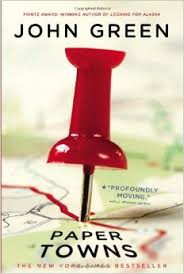Hopkins, Ellen. Burned. New York: Margaret K. McElderry Books, 2006. Print.
Hopkins, Ellen. Smoke. New York: Margaret K. McElderry Books, 2013. Print.
images from: www.amazon.com
My Thoughts
I decided to write about both of these books together, as they are a series, and I read them as a continuing story. I thought these would be books about a burn victim. I was wrong.
Burned is the story of Pattyn Von Stratten, a Mormon girl who tries to reconcile her church's doctrines with her abusive father's behavior. The church seems to turn a blind eye to the abuse, but Patty can't. Patty sees her mother's life and knows that's not what she wants for herself, but she also doesn't see other options. Patty is smart, funny and insight and much like other teenagers, she is seeking the answers to the "big" questions of life.
When her father finds her in a "compromising" position with a classmate, Patty is sent to live with her Aunt Jeannette (Aunt J) across state. Aunt J hasn't seen the family in years, but is the only one who agrees to take Patty in after her "sinful" actions.
This is just the medicine Patty needs. At Aunt J's, Patty learns independence and has freedom and learns another side of her family's story. She also learns how to ride a horse and actually falls in love with Ethan.
Burned ends with Patty back at home, but she is making plans for her escape. Once she's realized there's more in the world than her super-strict, abusive father's ways, she's ready to go. She feels bad for her younger siblings, but she cannot stay in that house with her meek, delusional mother and her ever drunk, angry father.
This is where Smoke begins. This book alternates between Patty's story and her sister Jackie April Von Stratten. Boy, the sister's story of being left behind is worth reading. At the beginning of this book, Patty has left her family and is on the run. Not all events, however, are as they appear. Without spoiling what happens here, I will say that I'm happy Hopkins decided to pick up Jackie's story and propel Patty's story with the alternating scenes. I liked seeing what was happening with both girls during the same time.
As we read Jackie's story, though, I was DISGUSTED by the mother's actions (or absence of actions). How could she reason that her decision was really "best" for Jackie? I was so proud of Jackie for pushing forward and using her brains to figure out a way to get back at those who hurt her. She is a strong character.
One of my favorite chapters is "The Library."
It was a safe haven. Not sure if it's the same in every school, but here, the stacks are fortresses. I love the smell of books, even old ones, as most of these are, at least the nonfiction. Ms. Rose [the librarian] collects young adult novels, so there's a wide selection of fiction. Everything from vamps to vampires, she likes to say, and that's an apt description. Pattyn's a huge reader, and she passed that passion on to me. Books were her escape, and they are mine, too. The best, I have to hide, or at least I did while there was any chance Dad might find them (Hopkins 178).I hope my students feel the same way about my library. I hope it is a fortress and a refuge (even though I hope they are not dealing with the same things that Patty & Jackie are).
These two books are not as gritty as the Crank series, nor as graphic as Tricks. That's fine with me. I enjoy that Hopkins writes compelling stories about characters that, fortunately, I cannot identify with, but I do have empathy for while bringing awareness to experiences that are very real.
